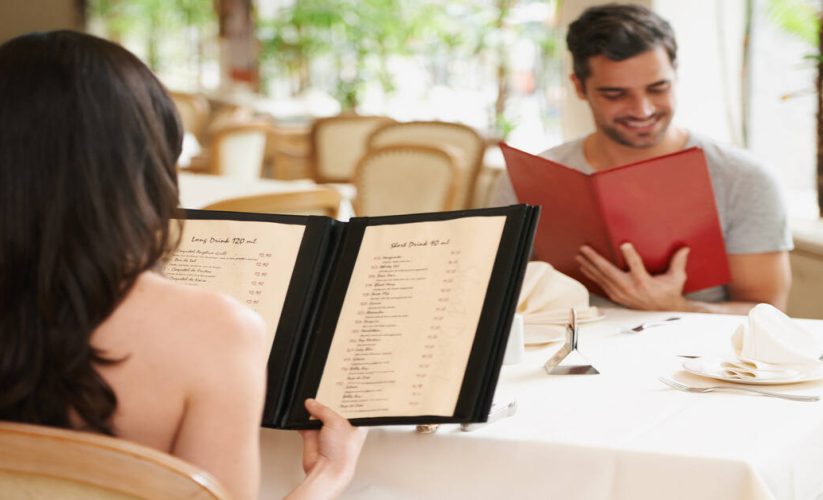
Decode Restaurant Menus: Insider Tips from Food Critics
Have you ever opened a restaurant menu and became overwhelmed with the choices? You’re not alone. However, professional food critics possess one of the special talents: they can read a restaurant menu as a tale. Each section, description and price point provides hints on the type of chef, the quality of the restaurant and the experience you are going to have.
It is not only the critics who should learn how to read a restaurant menu, but everyone who is fond of good food should know it is a useful practice. As soon as you get to know the hidden cues and organization, you will make a more informed choice when dining out, will understand value, and be confident in ordering anything next time you visit a restaurant.
Start with the Menu Layout
An effective menu narrates a story. The placement of dishes, such as appetizers, mains, desserts, etc. is often arranged as per the course but the true key to this lie is the way things are placed.
Research indicates that the eyes of a diner are naturally drawn to the upper-right corner first and that is one of the reasons why you will find chefs special or dishes with the highest profit margins served to that spot. Hot spots of signature dishes would also be the center and the top-left.
Take a look at these spots, you will see in a short time what the restaurant is trying to draw your attention to the most.
Understand Menu Descriptions
Menu descriptions are more than words; they’re marketing tools. Phrases like “handcrafted,” “slow-roasted,” or “locally sourced” are designed to create appetite appeal. However, when a food critic looks deeper, these words often reflect the restaurant’s priorities.
- “House-made” or “from scratch” usually means quality and freshness.
- “Imported” or “artisan” suggests premium ingredients.
- “Chef’s special” often highlights creativity or seasonal items.
When you learn to read a restaurant menu this way, you’ll start identifying authenticity versus filler language that just sounds fancy.
Spot the Hidden Price Strategy
Have you ever been to a menu that does not use dollar signs? That’s intentional. To make the expenditure easier, restaurants eliminate them. Similarly, the prices with endings .95 or .99 appear to be less expensive psychologically, although the distinction may be insignificant.
Between the lines a food critic can find an economy and fairness in prices of the menu can be a sign of concentration and consistency. In the meantime, a menu which is too big may indicate inferior quality or food that has been heated up.
Look for Ingredient Transparency
Good restaurants show the source of ingredients. When you find grass-fed beef, organic food, or local farm-grown eggs, it is an indication of a good sourcing policy.
In the case of ingredients being unspecified, perhaps, as a fish, as opposed to fish type, this can be interpreted as less focus on freshness or provenience. Reading a restaurant menu is learning to pay attention to such details and order food when the description of ingredients is clear.
Evaluate Portion and Pairing Clues
Such words as light, small plate, or shareable provide some indications of the portion size. Served with and accompanied by show description This denotes a full meal as opposed to an independent item.
In case there are any drink or side recommendations on the menu, that is another indicator of a restaurant that does not neglect balance, as a sommelier would with wine to match every taste.
Observe Seasonal and Signature Sections
A majority of the menus have a section where they can find Seasonal Favorites or Chef Picks. These meals are frequently creative, regional, or seasonal, ideal to those willing to have something special.
These are always checked by the critics. They are the places where chefs experiment, innovate and demonstrate their finest work.
Ask Questions Like a Pro
A real food critic will never be afraid to inquire. Not knowing the ingredients, the spice intensity, or how it is prepared, then enquire about your waiter/server. Not only does it assist you in making a better decision but also respects the art that is utilized in making the food.
You will not believe the amount of knowledge that servers possess concerning what is in, new and what is really worth trying.
Frequently Asked Questions
1. How can I tell if a restaurant uses fresh ingredients?
Search such keywords such as seasonal, house-made, locally sourced or daily special. When a menu contains particular farms or regions, it is a good indication of freshness. Do not use menus with such generic words as fish or vegetable medley, they may refer to pre-cooked or frozen food.
2. What’s the difference between “specials” and “signature dishes”?
The specials are short-lived and usually premised on what is fresh or on-season. The signature dishes are menu items that have a long-term duration and reflect the style of the chef or the identity of the restaurant. In case you are not sure, you can have one of each and enjoy creativity and consistency.
3. How do food critics decide what to order from a large menu?
The first step made by critics is the narrowing down by category (meat, seafood, vegetarian) and only focusing on dishes with clear information on their ingredients. They tend to ignore the extremely complex alternatives, simplicity tends to be a truer test of the real ability of a chef.
Final Thoughts
Being able to read a restaurant menu and act like a food critic changes your dining out experience. You will begin to see those style decisions, hints of ingredients, and words that speak a lot about the personality of a restaurant.
Once you know the thinking of a menu, ordering is not as much of a guessing game as it is an exploration, every dish comes across as a deliberate experience.That is why the next time you are sitting at a new restaurant you should not only look through the menu, you should analyze it. These tips will help you eat like a critic, have a lot more confidence in your choice and enjoy every bite a little more.





